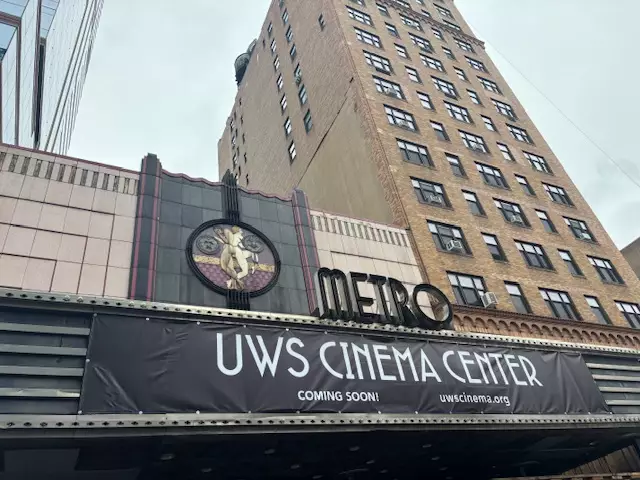The former Metro Theater, a once-thriving cornerstone of the Upper West Side’s cultural landscape, is poised for a remarkable renaissance. This transformation into a five-screen arthouse theater marks not just the revival of a building, but the potential rejuvenation of community spirit long extinguished in an era dominated by digital screens and streaming services. The project, spearheaded by the Upper West Side Cinema Center—a newly formed nonprofit—signals a powerful shift back towards appreciating cinema as a shared experience. It invites us to reconsider how vital such venues are in combatting cultural isolation.
With backing amounting to $6.9 million from a combination of public and private sources—including a substantial contribution from the state and endorsement from influential filmmakers like Martin Scorsese—the project illustrates a broad consensus on the need to rekindle arthouse cinema in a neighborhood that has dwindled in cultural offerings. This isn’t merely about saving a historic building; it’s about reclaiming a vital community hub, and in many ways, a piece of collective identity.
The Power of Collective Action
The unexpected momentum for this project underscores a profound lesson: when committed individuals and organizations come together to advocate for the arts, impactful change can occur. The contributions from individuals such as Kate Capshaw and Steven Spielberg and the support from neighborhood advocacy groups like the New Friends of Metro Theater highlight the collaboration between locals and influential figures in the arts. This serves as an effective model of civic engagement that marries grassroots enthusiasm with established resources.
For too long, the arts have suffered under the weight of indecision and neglect. With previous theaters falling prey to commercial forces that prioritize profit over cultural value, the abandonment of iconic venues becomes emblematic of a larger societal malaise. The remarkable backing of this project signifies that art lovers—both seasoned filmmakers and everyday citizens—are ready to push back against the encroachment of mediocrity and reclaim the narrative.
A New Chapter for Artistic Expression
The plans for the new cinema stretch beyond merely screening films. The inclusion of an education center and a café creates a multifaceted approach, applying strategic thinking to how culture is consumed and appreciated. Film has always thrived in spaces dedicated not just to watching, but to conversation and reflection. The design of this new center aims to serve not just as a venue for viewing films but as a vibrant node for community engagement and learning.
With the proposed programming featuring a selection of classics, documentaries, foreign films, and independent productions, this arthouse aims to appeal to a wide spectrum of filmgoers. Not simply catering to mainstream appetites, the usurper seeks to educate and engage audiences in a dialogue about film as an art form. This approach serves a dual purpose: it helps to reestablish the theater as a cultural touchstone while resuscitating critical thinking in an increasingly passive audience.
The Great Cultural Divide
The need for spaces like the Upper West Side Cinema Center becomes even more pronounced when you consider the wider cultural landscape. While areas like Lower Manhattan and parts of Brooklyn flourish with independent cinemas, areas north of Lincoln Center have become barren stretches of cinematic offerings. The gentrification of culture may provide conveniences in some aspects, but it often comes at the cost of erasing diverse artistic expressions.
This theater revival indicates a growing recognition of the arts as fundamental avenues for connection and understanding within increasingly fragmented societies. In a world where face-to-face social interactions grow ever rarer, opportunities for community cohesion through shared art experiences become paramount. The Metro Theater’s renovation is poised to fill this void, prompting a cultural rethink: Are we retreating into silos, or can we harness our shared love of cinema to build bonds?
The Future of Film in the Upper West Side
As the revitalization plans take flight, there’s an underlying sense of urgency to reclaim the cinematic legacy the Upper West Side has lost. More than just the restoration of a theater, this project could redefine how the community interacts with art, proposing a 21st-century haven for creativity and collaboration.
However, it’s crucial to remain vigilant and engaged. The narrative of arts funding, and its fluctuation, can shift rapidly in our volatile political climate. If we genuinely believe in the transformative power of cinema to bridge divides, then continued support for such ventures—both financially and communally—will determine the shape of our cultural landscape. The aspiration to transform the Metro Theater could be just the beginning, a pivotal moment in reassessing not just local cinema, but our collective artistic investment overall.

